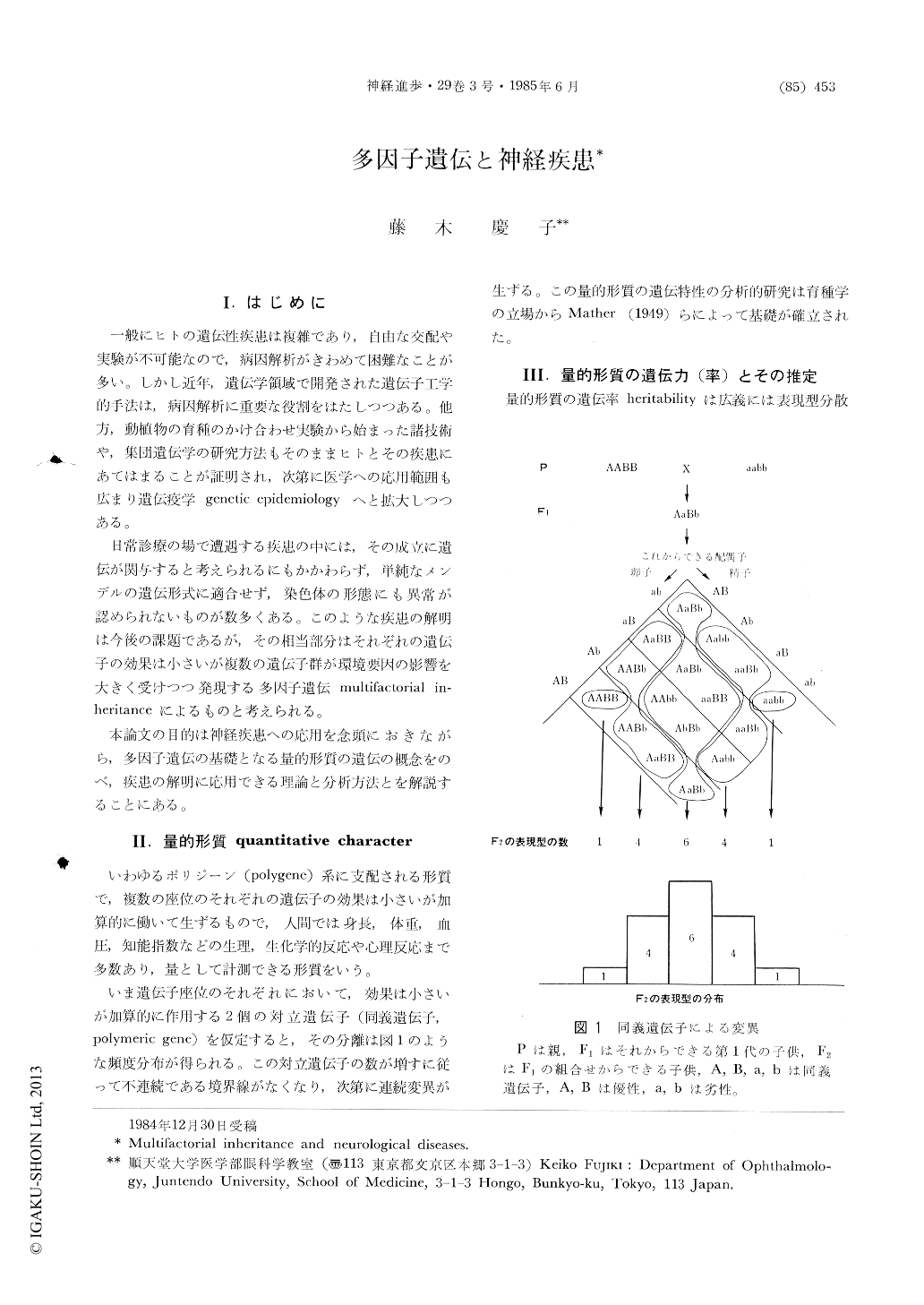Japanese
English
- 有料閲覧
- Abstract 文献概要
- 1ページ目 Look Inside
I.はじめに
一般にヒトの遺伝性疾患は複雑であり,自由な交配や実験が不可能なので,病因解析がきわめて困難なことが多い。しかし近年,遺伝学領域で開発された遺伝子工学的手法は,病因解析に重要な役割をはたしつつある。他方,動植物の育種のかけ合わせ実験から始まった諸技術や,集団遺伝学の研究方法もそのままヒトとその疾患にあてはまることが証明され,次第に医学への応用範囲も広まり遺伝疫学genetic epidemiologyへと拡大しつつある。
日常診療の場で遭遇する疾患の中には,その成立に遺伝が関与すると考えられるにもかかわらず,単純なメンデルの遺伝形式に適合せず,染色体の形態にも異常が認められないものが数多くある。このような疾患の解明は今後の課題であるが,その相当部分はそれぞれの遺伝子の効果は小さいが複数の遺伝子群が環境要因の影響を大きく受けつつ発現する多因子遺伝multifactorial inheritanceによるものと考えられる。
Family patterns in many diseases do not fit to those in single mendelian inheritances in spite of circumstantial evidences that they are genetically caused. Multifactorial inheritance in which effects of each gene are small and additive, and influenced by the environmental factors, is difficult to evaluate as a possible explanation for these diseases.
In this paper, the basis of multifactorial inheritance was introduced, and the concept of a threshold trait was described, and the characteristics of multifactorial inheritance were explained as they are applied invoking models to some hereditary diseases.

Copyright © 1985, Igaku-Shoin Ltd. All rights reserved.


